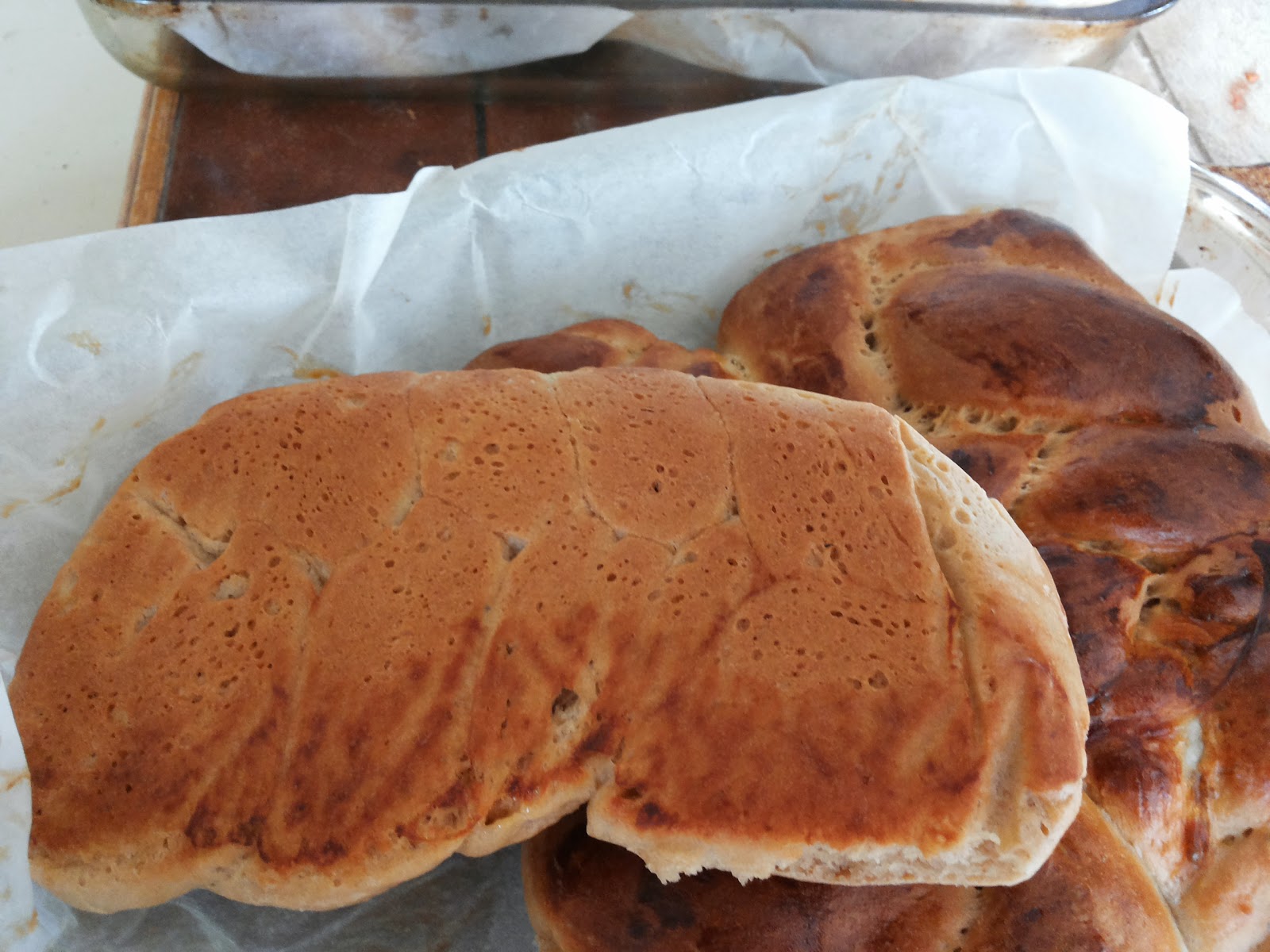Since my phone has sent the pictures in the opposite order/sequence from when they were taken, I'll just give my explanations in the order of the pictures.
First of all, I baked more challah than I needed and froze the leftover. My recipe is simple, and I do it all by hand, though you can use a mixer dough hook or food processor if you have one large enough. This is a 2 kilo (almost two and a half pounds, 2 1/2 lbs.) recipe. Of course you can half it, but then you may not have enough for the "challah" bracha, blessing.
Here's my
challah basic recipe, also posted here with more of a story. Yesterday, I used mostly 70% whole wheat flour. A kilo is 2.2 lbs or 2 lbs 3 oz
This is an approximation of the challah recipe:
1 c sugar (dark brown)
2 T dehydrated yeast
a pinch of coarse salt
3 1/2c warm water
1 c oil
2 eggs for dough (medium or smallish by American standards),
an additional egg to coat the challot before baking
2 kilo of flour, which could be any combination of white and wholewheat
It's hard to know the exact quantity of flour
mix sugar, yeast, water, oil a cup of flour
cover with plastic and let sit until bubbly and rising
add the eggs and more flour plus the pinch of coarse salt, mixing as you go, then knead until it doesn't stick to your hands
coat with oil, cover with plastic and wait until it's at least doubled
"punch it down"
then "take challah," (click for instructions)
optional let it rise again
shape the challah
brush with raw egg, or spread with your fingers
let it rise
bake, start in an oven hotter than for a cake and then lower the heat until cooler than a cake after the outside begins to get a light brown
It's ready when the bottom is hard and there's a hollow sound when you tap it.
 |
| You can judge the readiness by checking the bottom and tapping hoping for a "hollow" sound. |
 |
| baked |
 |
| They were this big when they were put in the oven. |
 |
| punching down the dough the second time |
 |
| soon after shaping, look at how small they were |
I prefer baking with dehydrated yeast. There are a couple of reasons for this.
- You can keep the yeast for even a couple of years in a glass jar in the closet. It stays good. Of course check the date on the package and even tape the expiration date onto the jar.
- Years ago, when there was only the pieces of live yeast on sale here, it didn't keep long, even when frozen, and if frozen it had to be thawed out.
- When using fresh yeast, I had to knead the dough wearing cotton gloves, because the yeast caused infections around my nails. I've had no problems with the dehydrated.
- Now in Israel you can buy little packets of yeast, but they go bad too quickly.





3 comments:
Your challot are beautiful!
I am drooling. Such gorgeous Challot!
Thanks so much.
Post a Comment